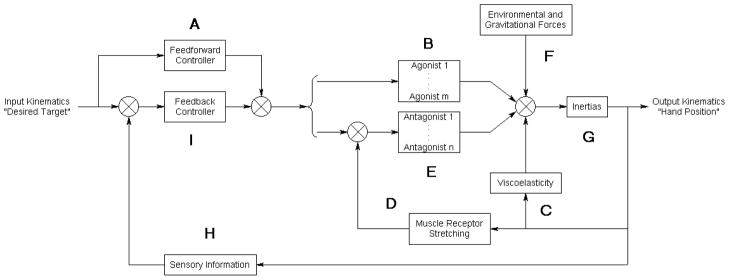Figure 2.
Simple model of the neuromuscular system applied to a spastic hemiparetic arm during forward reaching. Junctions that sum or compare signals are represented by “⊗”. Agonist and antagonistic muscles are indexed to m and n respectively. Reaching impairment could arise at various components of the model, eg. inability to activate muscles due to decreased motor recruitment (A & I), inability to generate muscle force due to disuse atrophy (B), changes in muscle structure that result in increased viscoelasticity (C), and increased gain (sensitivity) to stretching of muscle receptors (hyperreflexia) (D).

